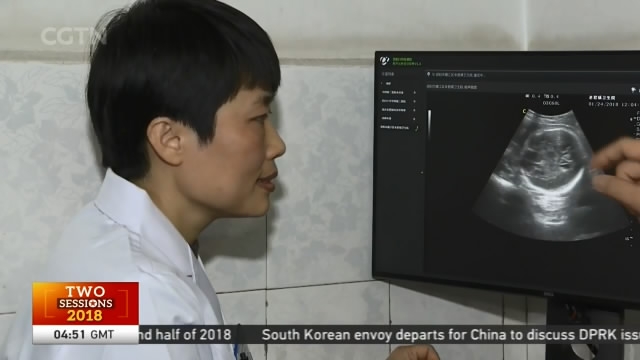
14:14, 12-Mar-2018
Healthcare Reforms: Supply-side changes benefit rural residents

China's healthcare system has been undergoing a series of reforms, designed to make healthcare more accessible and affordable, especially in rural communities. Our China Correspondent Yao Chin traveled to Sichuan Province to see the reforms in action.
"The doctor will see you now." The doctor will see you now. It's a promise that's not easy to make, in a country with around 1.4 billion potential patients. But it's a promise that the Chinese government is working hard to keep. And that's through ongoing healthcare reforms.
I visited one of China's leading hospitals to understand the reforms both in theory and in practice.
PROFESSOR ZHANG WEI HUA XI HOSPITAL, CHENGDU "The development of healthcare reform in China is affected by many aspects, first, the government is changing its health management structure, and looking to provide a medical insurance coverage for all. Secondly, as we know, our healthcare service from the past was outdated. Now with the development of China's medical sciences and technologies, the system is advancing. Especially as our usage of data develops, medical treatment will develop too."
YAO CHIN CHENGDU "As many as 20,000 out-patients see a doctor here every day. And they do so by checking in with one of these."
As China has a limited medical referral system, this access card allows the patient to book an appointment with a specific doctor or service, and this is paid for in part by their healthcare insurance. It also helps keep track of how patients use medical services and which drugs they use. So in future, this data will help optimize the quality of care patients receive, and monitor the efficiency of the system, helping to keep costs down.
Making it more convenient to be seen by a doctor is a major part of the reforms. This is being achieved by organizing healthcare groups into a three-tier hierarchical structure. So, instead of visiting a major, tertiary level hospital like Hua Xi, patients will initially be cared for by primary level hospitals.
LIN LIUJUN PATIENT "I was very anxious when I learned there might be a problem with my baby. I came here at first to have the foetus examined, and the doctors told me the solution would be having an ultrasound scan and remote consultation performed by another doctor from a higher level hospital."
I went to that higher, secondary level hospital to see Liujun's remote consultation take place. The Maternal and Childcare Hospital in Ziyang City provides clinical support to around 110 clinics and community hospitals, and also serves as a link to Hua Xi , the tertiary level hospital in Chengdu.
YAO CHIN ZIYANG CITY "What you're seeing is a live ultrasound of Liujun's baby, who is some 70 kilometres away. Dr Ho is a specialist who only in the past seven months has had this technology to be able to do this. This is China's health reforms in action."
China's healthcare reforms are still in their infancy. Tertiary hospitals still control much of the resources, and it will take time to channel these to primary hospitals. But it seems clear that the ongoing healthcare reforms are making a major contribution towards the goal of a healthy China Yao Chin, CGTN, Ziyang City, Sichuan.

SITEMAP
Copyright © 2018 CGTN. Beijing ICP prepared NO.16065310-3
Copyright © 2018 CGTN. Beijing ICP prepared NO.16065310-3